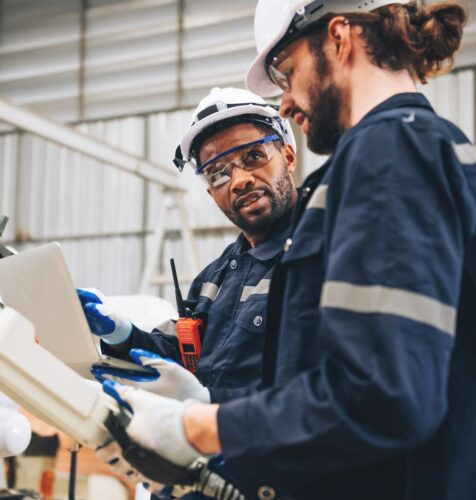
Hazards That Cause the Most Lost Time
According to the Bureau of Labor Statistics, injuries and illnesses that required specialists to miss at least one day of work totaled 1,062,700 in 2021. Many of these top safety hazards were avoidable. And in some cases, the problem wasn’t obvious until it was too late.
Some hazards are simple to identify, while others, like repetitive work injuries, aren’t.
However, these chronic injuries may be just as debilitating. Some of the most dangerous workplace risks, like noise hazards and poor office ergonomics, require time to manifest symptoms.
Whether they are obvious, or not, they made our list of hazards that cause the most lost time. All these hazards can harm livelihoods and should be mitigated, so without further ado, let’s dive into hazards that frequently send specialists home for recovery.
Explore this Article:
Most Common Lost Time Causes
Regardless of what industry you’re talking about, the following hazards are as hard to spot as they can be harmful.
Slips, trips, and falls are one of the largest contributors to lost time. While trip or fall hazards can’t be totally eliminated, they can be significantly reduced by regulating access routes and working areas and by educating personnel to take the necessary measures.
Cold and flu send millions of workers home every year. It is one of the leading contributors to lost work time. Sure the injury isn’t directly related to work, yet the proximity to infected personnel gives the flu grounds to spread. This is why some offices and sites practice a strict stay home policy if anyone has a cold or flu. One person staying at home is far better than many the following week.
Electrical shocks often occur with old extension cords and equipment. Replacing old extension cords and equipment can go a long way in mitigating electrical hazards. Grounding in machinery is often another issue. Some companies have even reported electrical hazards after placing compliance safety switches in old machinery.
The lack of guarding or safety systems creates many cuts, chops, and time-lost incidents every year in America. Despite frequent compliance, some machines still remain unsafe. Some companies have seen huge benefits to reporting systems. If they give their staff a means to report safety hazards, proper guarding can be thought up using the new information.

Lack of training is frequently cited as a contributor to lost time injuries by OSHA. They also mention this is especially true with temporary workers. “Temporary workers” make up a sizable section of the workforce and, since they aren’t expected to stick around for the long haul, their workplace trainingis frequently less extensive. As a result, these workers who aren’t properly trained end up endangering both themselves and others.
Hazardous materials–mainly corrosives–cause many lost time injuries at work. These incidents commonly occur in manufacturing and can require lengthy recovery times.
Heavy equipment is yet another huge hazard that contributes to lost time injuries. Construction sites and steel mills are busy areas that often contain many large vehicles, and there are many risks for distracted specialists. These distracted specialists can often walk into or in front of danger.
Constricting where people walk and which doors they use can mitigate heavy machinery disasters. Many companies forbid workers from using large vehicle doors and other areas designated for large vehicles. Others tell their specialists to always assume the forklift, crane, or machine operator doesn’t see you and to always give heavy machinery the right of way.
HAVS, or Hand Arm Vibration Syndrome, is a chronic condition of the joints, nerves, and blood vessels that is typically brought on by the prolonged use of power tools. Not only does it cause lost time injuries but this hazard and subsequent syndrome forces people into early retirement or to have to switch careers due to the severe pain.
Airborne dust and other materials can cause life-threatening issues and these propagate to massive lost time injuries in America each year. Like the Hand-Arm Vibration Syndrome, this dust can force early retirement or a career switch altogether.
On many worksites, the dust is more than just plain old dirt; it can also contain harmful compounds that lead to conditions like silicosis, asthma, or COPD. Manufacturing plants frequently need to use filters and PPE to combat the variety of particles they produce in the processes.

Recognizing Hazards in the Workplace
Your employees have one of the best views for detecting safety risks. Giving employees a fast means to record dangers and rewarding them for doing so will go a long way toward promoting safety. Furthermore, documenting these hazards in a way they can be recalled and compared is also a great way to recognize potential hazards.
There are also safety hazards that are common in any industry. For instance, using extension cords incorrectly can create tripping dangers. Additionally, as cords are continually trampled on by large machinery or worn down by foot activity, it can eventually raise the risk of electrical shock. Another common mistake is blocking emergency devices with boxes and other equipment. OSHA suggests drilling for many emergencies so you can recognize if boxes are covering sprinkler systems, things are blocking exits, or a mess could impede emergency workers.
The key to prevention is data. Some safety risks might not be immediately apparent as dangerous.
It’s best to make the most of all the information available to you. Therefore, the more information you can gather, the better. Companies that collect more are less prone to accidents and therefore have fewer lost work incidents.
Addressing Perceived Hazards
While most of these safety risks cannot be completely eliminated, they can be significantly diminished using PPE, machine guards, and other preventative measures. Additionally, safety awareness training is quite helpful. It can persuade workers to operate more safely around any type of workplace hazard, whether it is asbestos or a trailing extension cord. Employers share some of the responsibility and should make sure that risks, events, and even employee complaints are treated seriously and resolved right away. Of course, identifying workplace safety hazards is the first step; after that, each issue will need a different remedy.






























